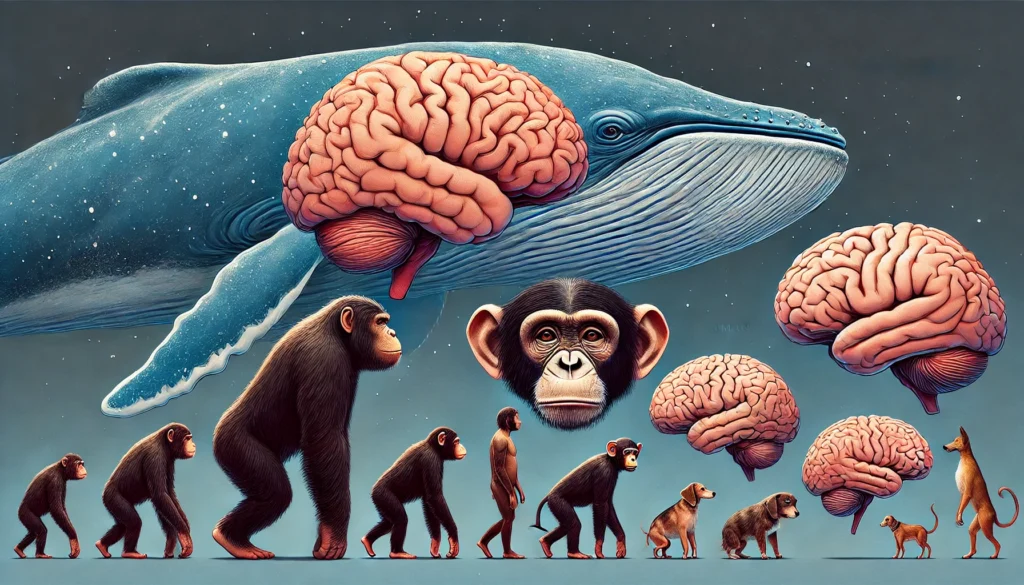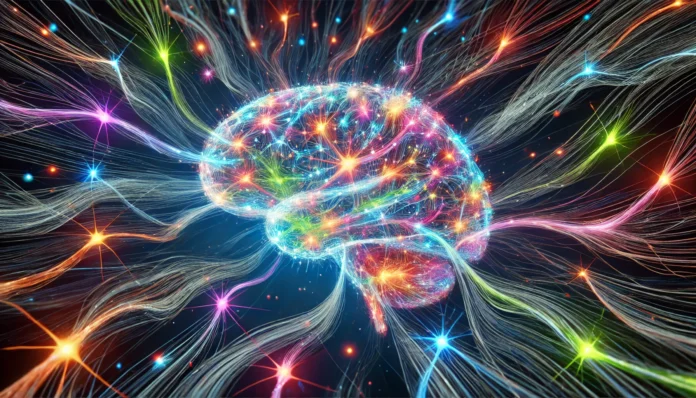Understanding the Weight of the Human Brain
The human brain is one of the most complex and fascinating organs in the body. It serves as the command center for thoughts, emotions, movement, and various physiological functions. But have you ever wondered, how much does your brain weigh? On average, the human brain weighs about 3 pounds (or approximately 1.3 to 1.4 kilograms). However, brain weight can vary depending on factors such as age, sex, and overall health. Interestingly, while brain size is often associated with intelligence, scientific research suggests that cognitive abilities are more influenced by neural connections and efficiency rather than sheer weight.
You may also like : Best Things for Brain Health: Expert-Backed Strategies to Keep Your Mind Sharp
Brain weight is also influenced by hydration and biological changes over a person’s lifetime. At birth, the human brain weighs around 350 to 400 grams (about 0.77 to 0.88 pounds). By the time a child reaches adulthood, the brain reaches its full size and weight, peaking at approximately 1,300 to 1,400 grams. Contrary to common belief, a larger brain does not necessarily equate to higher intelligence. Instead, neural density and synaptic efficiency play a more crucial role in cognitive capabilities.
The Role of Brain Weight in Cognitive Function
Although brain weight can provide some insights into an individual’s neurological health, cognitive function is influenced by numerous factors beyond mere mass. Neuron connectivity, neurotransmitter efficiency, and overall brain plasticity play a significant role in determining cognitive abilities. For instance, Albert Einstein’s brain weighed approximately 1,230 grams, which is below the average weight for an adult male. However, studies of his preserved brain indicate that he had an unusually high density of neurons and glial cells in certain regions responsible for mathematical reasoning and spatial awareness.
Additionally, brain weight can decrease with age due to neuronal shrinkage and the loss of synaptic connections. This is a natural part of the aging process, but cognitive decline can be mitigated by engaging in mental exercises, maintaining a healthy diet, and staying physically active. Researchers continue to explore how brain size and weight correlate with intelligence, but current evidence suggests that synaptic connections and overall brain efficiency are far more critical determinants of cognitive function than absolute weight alone.
How Much Do Brains Weigh Across Different Species?
The weight of a brain varies significantly across different species, often correlating with body size rather than intelligence. For example, the brain of a sperm whale weighs approximately 17 pounds (7.8 kilograms), making it the heaviest brain of any known species. In contrast, an adult human brain weighs around 3 pounds, while the brain of a dog averages 72 grams. Interestingly, the brain-to-body mass ratio, known as the encephalization quotient (EQ), provides a better measure of intelligence across species. Humans have an EQ of about 7.5, which is significantly higher than that of most animals, including dolphins and chimpanzees.
Birds and primates often exhibit high cognitive abilities despite having smaller brains in absolute terms. For example, crows and parrots demonstrate problem-solving skills comparable to those of small primates, despite having brains that weigh less than 20 grams. This supports the idea that intelligence is more closely linked to neural efficiency rather than sheer brain mass. Understanding how brain weight and neural connectivity interact across species provides valuable insights into evolutionary adaptations and the diversity of cognitive abilities in the animal kingdom.

How Much Miles Do Neurons Travel Per Hour? The Speed of Neural Communication
Beyond its weight, the human brain is remarkable for the speed and efficiency of its neural networks. The question of how much miles do neurons travel per hour is intriguing, considering that neurons communicate through electrical and chemical signals that traverse vast distances within the brain and nervous system. The fastest neural signals can travel at speeds of up to 268 miles per hour (approximately 431 kilometers per hour). This rapid transmission enables near-instantaneous responses to stimuli, such as pulling your hand away from a hot surface or reacting to a sudden noise.
Neuronal speed depends on the type of neuron and the presence of myelin, a fatty substance that insulates axons and enhances signal transmission. Myelinated neurons, such as those found in the central nervous system, conduct signals much faster than unmyelinated neurons. For example, motor neurons responsible for controlling muscle movements transmit signals at speeds ranging from 70 to 120 meters per second. In contrast, pain-sensing neurons, which lack myelin insulation, transmit signals at a much slower rate of about 2 meters per second.
Understanding the speed of neural communication highlights the brain’s efficiency in processing information and coordinating bodily functions. Even minor disruptions in signal transmission, such as those caused by neurodegenerative diseases like multiple sclerosis, can significantly impact cognitive and motor functions. This underscores the importance of maintaining brain health through proper nutrition, regular exercise, and mental stimulation.
How Brain Weight Changes Over a Lifetime
Brain weight is not static; it changes throughout life in response to various physiological and environmental factors. During early development, the brain undergoes rapid growth, reaching nearly 90% of its adult size by age six. Throughout adolescence and early adulthood, synaptic pruning occurs, refining neural connections and optimizing cognitive efficiency.
As individuals age, the brain gradually loses volume due to neuronal shrinkage and the breakdown of neural pathways. This process is a normal aspect of aging, but lifestyle factors such as diet, exercise, and mental engagement can significantly influence the rate of cognitive decline. Research suggests that individuals who engage in lifelong learning, maintain strong social connections, and follow a brain-healthy diet rich in antioxidants and omega-3 fatty acids may experience slower brain aging.
Neuroplasticity, the brain’s ability to adapt and reorganize itself, plays a crucial role in mitigating age-related cognitive decline. Even in later life, the brain remains capable of forming new connections and compensating for lost functions through cognitive exercises and physical activity. Understanding these processes highlights the importance of proactive measures to support brain health throughout a person’s lifespan.
The Future of Brain Research: Unlocking the Mysteries of Neural Function
Scientific advancements in neuroscience continue to shed light on the complexities of brain function and health. Researchers are exploring innovative techniques such as brain-computer interfaces, neurostimulation, and gene therapy to treat neurological disorders and enhance cognitive performance. The study of how much does the average brain weigh remains a fundamental aspect of understanding human cognition and brain development, but future research aims to uncover even deeper insights into neural function.
Emerging technologies, such as artificial intelligence and machine learning, are also revolutionizing the field of neuroscience by enabling more accurate modeling of brain activity. These advancements have the potential to improve treatments for conditions such as Alzheimer’s disease, Parkinson’s disease, and traumatic brain injuries. As science progresses, our understanding of the brain’s capabilities and limitations will continue to evolve, paving the way for new breakthroughs in cognitive enhancement and neuroprotection.

Frequently Asked Questions: Brain Weight, Neural Function, and Cognitive Insights
1. What factors influence how much the average brain weighs?
Brain weight is influenced by multiple factors, including genetics, age, sex, hydration, and overall health. While the commonly cited average brain weight is around three pounds (1.3 to 1.4 kilograms), this can vary slightly among individuals. One significant factor in brain weight fluctuation is hydration, as the brain is composed of approximately 75% water. Dehydration can cause a temporary reduction in brain volume, which may affect cognitive function. Additionally, age plays a crucial role—brains tend to reach peak weight in early adulthood but can gradually shrink due to neuron loss and decreased synaptic density as a person ages.
2. How does brain weight compare between men and women?
On average, men tend to have slightly heavier brains than women, with male brains typically weighing about 100-150 grams more. However, this does not translate to greater intelligence or cognitive abilities. Brain efficiency is not determined by mass but rather by the complexity of neural connections and synaptic density. Women’s brains have been found to be more efficient in certain areas, with higher connectivity between hemispheres and a greater proportion of gray matter relative to white matter. The differences in brain weight between sexes are largely related to overall body size differences rather than cognitive capacity.
3. How does brain weight change throughout a person’s life?
The human brain undergoes substantial changes in weight from infancy to old age. At birth, the brain weighs about 350-400 grams, increasing rapidly during childhood and reaching full size by early adulthood. However, beginning around middle age, the brain starts to experience gradual shrinkage, with an estimated loss of about 5% of its weight per decade after the age of 40. This decline is largely due to neuron atrophy, a reduction in neurotransmitter production, and changes in the brain’s vascular system. Fortunately, engaging in cognitive exercises, maintaining a nutritious diet, and staying physically active can help slow down this process.
4. How much do brains weigh in comparison to other animals?
Human brains are relatively large in proportion to body size, but they are not the heaviest among species. For instance, sperm whales have the heaviest brain of any known species, weighing approximately 17 pounds (7.8 kilograms). In contrast, the brains of primates like chimpanzees weigh around 400 grams, while a dog’s brain typically weighs about 72 grams. Although some animals have larger brains than humans, intelligence is more accurately measured by the encephalization quotient (EQ), which accounts for brain size relative to body mass. Humans have the highest EQ among mammals, indicating superior cognitive abilities.
5. How much miles do neurons travel per hour when transmitting signals?
Neurons in the human brain are responsible for rapid communication between different regions of the body, and their signals can travel at astonishing speeds. In some cases, neural impulses move at up to 268 miles per hour (approximately 431 kilometers per hour). This high-speed transmission is crucial for reflexes, motor coordination, and real-time processing of sensory information. The presence of myelin, a fatty sheath that insulates axons, significantly increases the speed of neural communication. Without myelin, signals travel much slower, which is why diseases that damage myelin, such as multiple sclerosis, can severely impact cognitive and motor function.
6. How does brain weight correlate with intelligence?
There is a common misconception that brain weight directly correlates with intelligence, but research suggests that cognitive ability is more dependent on neural efficiency and synaptic connections. While some of history’s greatest minds, like Albert Einstein, had brains that were smaller than average, studies have shown that his brain had an unusually high density of neurons in areas related to mathematical reasoning. Intelligence is more accurately linked to factors such as white matter integrity, brain plasticity, and the ability to form and strengthen neural connections. This means that cognitive function is not solely dictated by how much do brains weigh, but rather by the quality of neuronal interactions.
7. Can brain weight be increased through cognitive training?
Although the physical weight of the brain does not dramatically increase due to cognitive training, engaging in mental exercises can enhance neural density and connectivity. Activities such as learning new skills, practicing memory exercises, and engaging in problem-solving tasks stimulate neurogenesis and synaptic strengthening. Studies have shown that individuals who regularly challenge their brains through education, language learning, or musical training often develop greater cognitive resilience. While these activities may not significantly impact how much does your brain weigh, they do contribute to improved mental function and reduce the risk of cognitive decline.
8. What happens when brain weight decreases due to aging?
As individuals age, brain weight naturally decreases due to factors such as neuronal loss, decreased blood flow, and reduced synaptic activity. This gradual shrinkage can contribute to cognitive decline, slower reaction times, and memory impairment. However, not all brain shrinkage results in noticeable cognitive deficits. Many people maintain sharp cognitive abilities well into old age by engaging in regular physical exercise, maintaining a brain-healthy diet rich in omega-3 fatty acids, and staying socially active. Research suggests that even if brain weight decreases over time, its efficiency can be preserved through lifelong learning and mental stimulation.
9. Are there medical conditions that can alter brain weight?
Several medical conditions can influence brain weight, either through atrophy or swelling. Neurodegenerative diseases such as Alzheimer’s and Parkinson’s can lead to significant reductions in brain volume due to neuron loss. On the other hand, conditions like hydrocephalus or brain edema can temporarily increase brain weight due to fluid accumulation. Traumatic brain injuries may also impact brain mass by causing localized damage and loss of neural tissue. In some cases, interventions such as medication, rehabilitation therapies, and lifestyle modifications can help mitigate the effects of these conditions and support brain function.
10. What are the best ways to maintain brain health and optimize neural function?
Maintaining brain health involves a combination of physical, mental, and nutritional strategies. Regular physical exercise has been shown to improve blood circulation to the brain, promoting the delivery of oxygen and essential nutrients. A diet rich in antioxidants, healthy fats, and vitamins supports brain cell function and protects against oxidative stress. Engaging in mentally stimulating activities such as reading, solving puzzles, and learning new skills helps maintain neural plasticity. Social interaction and stress management also play key roles in preserving cognitive health. While how much does the average brain weigh may not change significantly through these practices, the efficiency and longevity of brain function can be significantly improved.

Conclusion: The Fascinating Complexity of Brain Weight and Function
The question of how much does the average brain weigh may seem simple, but it opens the door to a deeper exploration of brain function, cognitive ability, and neurological health. While the average human brain weighs around 3 pounds, its true power lies not in its mass but in its intricate network of neurons and synapses. Understanding how brain weight changes over time, how neurons transmit signals, and how lifestyle factors influence brain health provides valuable insights into maintaining cognitive function and longevity.
By prioritizing brain health through proper nutrition, mental engagement, and physical activity, individuals can optimize cognitive performance and reduce the risk of age-related decline. The future of neuroscience holds exciting possibilities, offering new avenues for enhancing brain function and treating neurological conditions. As research continues to evolve, the study of brain weight and function will remain a cornerstone of understanding human cognition and unlocking the mysteries of the mind.
human brain size, brain weight comparison, neuron signal speed, brain development stages, cognitive function and aging, brain plasticity research, neural efficiency, factors affecting brain size, brain-to-body ratio, intelligence and brain structure, neurodegenerative diseases, brain health optimization, myelin and neural speed, cognitive decline prevention, brain hydration effects, neuron connectivity, brain function and nutrition, learning and brain growth, brain aging process, brain weight variations
Further Reading:
What percentage of our brain do we use?
Human Brain: Facts, Functions & Anatomy
10 Interesting Facts About Your Dog’s Brain
Disclaimer
The information contained in this article is provided for general informational purposes only and is not intended to serve as medical, legal, or professional advice. While Health11News strives to present accurate, up-to-date, and reliable content, no warranty or guarantee, expressed or implied, is made regarding the completeness, accuracy, or adequacy of the information provided. Readers are strongly advised to seek the guidance of a qualified healthcare provider or other relevant professionals before acting on any information contained in this article. Health11News, its authors, editors, and contributors expressly disclaim any liability for any damages, losses, or consequences arising directly or indirectly from the use, interpretation, or reliance on any information presented herein. The views and opinions expressed in this article are those of the author(s) and do not necessarily reflect the official policies or positions of Health11News.


